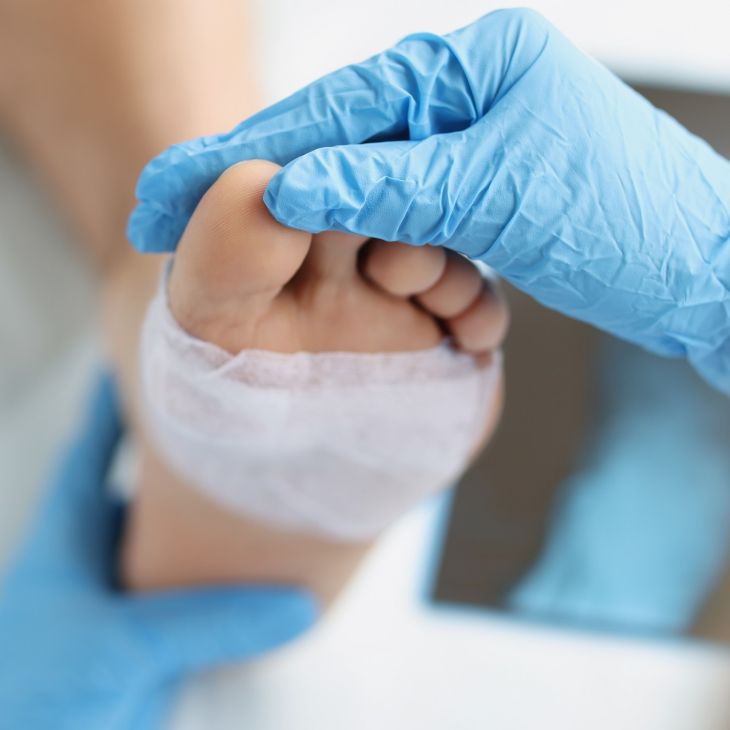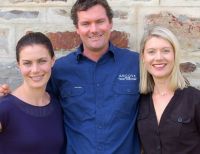19 February 2024
A team of international scientists has developed a more effective treatment for chronic wounds that does not involve antibiotics or silver-based dressings, but an ionized gas called plasma.
The treatment involves boosting the plasma activation of hydrogel dressings with a unique mix of different chemical oxidants that decontaminate and help heal chronic wounds.
University of South Australia physicist Dr Endre Szili, who led the study published this week in Advanced Functional Materials, describes the new method as “a significant breakthrough” that could revolutionise the treatment of diabetic foot ulcers, internal wounds and potentially cancerous tumours.
“Antibiotics and silver dressings are commonly used to treat chronic wounds, but both have drawbacks,” Dr Szili says. “Growing resistance to antibiotics is a global challenge and there are also major concerns over silver-induced toxicity. In Europe, silver dressings are being phased out for this reason.”
More than 540 million people worldwide are living with diabetes, of which 30% develop a foot ulcer during their lifetime. The cost of managing chronic wounds such as diabetic foot ulcers already exceeds $US17 billion annually and this cost is expected to climb in coming decades as obesity and lack of exercise lead to more cases.
The benefits of cold plasma ionised gas have already been proven in clinical trials, showing it controls not only infection but also stimulates healing. This is due to the potent chemical cocktail of oxidants, namely reactive oxygen and nitrogen species (RONS) it produces when it mixes and activates the oxygen and nitrogen molecules in the ambient air.
Dr Szili and his colleagues have shown that plasma activating hydrogel dressings with RONS makes the gel far more powerful, killing common bacteria.
Although diabetic foot ulcers were the focus of this study, the technology could be applied to all chronic wounds and internal infections.
“Despite recent encouraging results in the use of plasma activated hydrogel therapy (PAHT), we faced the challenge of loading hydrogels with sufficient concentrations of RONS required for clinical use. We have overcome this hurdle by employing a new electrochemical method that enhances the hydrogel activation.”
As well as killing common bacteria (E. coli and P. aeruginosa) that cause wounds to become infected, the researchers say that the plasma activated hydrogels might also help trigger the body’s immune system, which can help fight infections.
“Chronic wound infections are a silent pandemic threatening to become a global healthcare crisis,” Dr Szili says. “It is imperative that we find alternative treatments to antibiotics and silver dressings because when these treatments don’t work, amputations often occur.”
“A major advantage of our PAHT technology is that it can be used for treating all wounds. It is an environmentally safe treatment that uses the natural components in air and water to make its active ingredients, which degrade to non-toxic and biocompatible components.”
Dr Szili says that, in future, plasma could be used to treat cancerous tumours by activating drugs contained within gels injected into the body.
“The active ingredients could be delivered over a lengthy period, improving treatment, with a better chance of penetrating a tumour.
“Plasma has massive potential in the medical world, and this is just the tip of the iceberg,” Dr Szili says.
The next step will involve clinical trials to optimise the electrochemical technology for treatment in human patients.
A video explaining the treatment is available at: https://youtu.be/TdwfA9narMg
Notes for editors
“Electrochemically Enhanced Antimicrobial Action of Plasma Activated Poly(vinyl alcohol) Hydrogel Dressings” is published in Advanced Functional Materials. It is authored by scientists from the University of South Australia; Osaka City University, Japan; the University of Sheffield, UK; the University of Alabama, US; and the University of Adelaide.
…………………………………………………………………………………………………………………………
Media contact: Candy Gibson M: 0434 605 142 E: [email protected]
Researcher: Dr Endre Szili E: [email protected]







